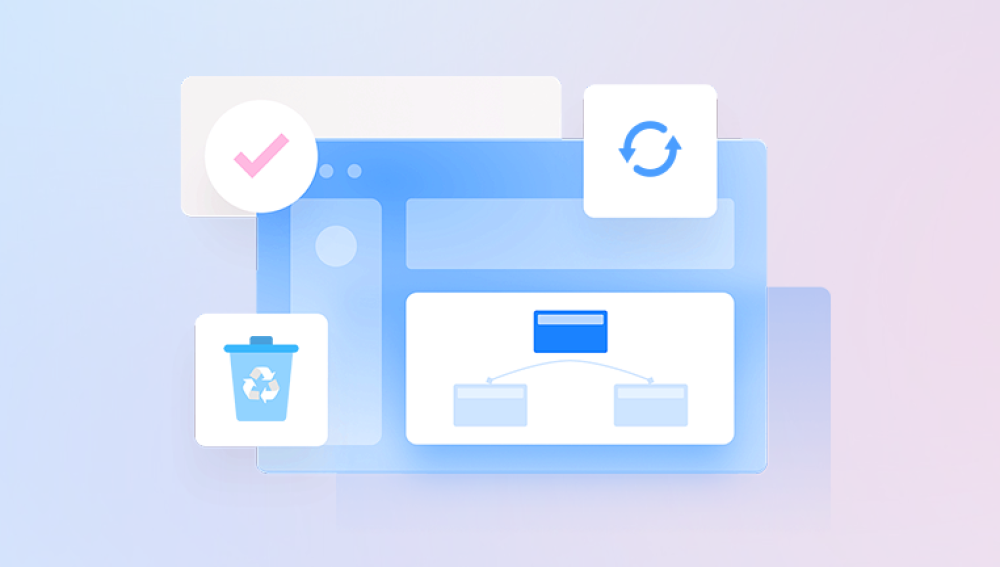The Recycle Bin is often seen as the final safeguard before files are permanently deleted from a Windows computer. When you delete a file using standard delete options, it typically goes to the Recycle Bin, allowing you to restore it easily. But what happens when you've emptied the Recycle Bin or used Shift + Delete to bypass it altogether? Many users believe that once the Recycle Bin is emptied, the data is gone forever.
1. What Happens When Files Are Deleted
When a file is deleted from the Recycle Bin, it is not immediately erased from the hard drive. Instead, the space it occupied is marked as "available" for new data. Until new data overwrites it, recovery is possible.
Logical Deletion: The file’s location pointer is removed, but the data remains.
Physical Overwriting: Once new data is written to the same sectors, recovery becomes more difficult.
This is why it’s crucial to stop using your computer after accidental deletion, to prevent new data from overwriting the recoverable files.

2. Check Backups and File History
Before diving into recovery tools, check if you have backups enabled:
Windows File History: Go to Settings > Update & Security > Backup. Use File History to restore previous versions.
System Restore Points: Sometimes files are stored in system snapshots.
Cloud Services: Check OneDrive, Google Drive, or Dropbox for synced copies.
3. Use Data Recovery Software
Drecov Data Recovery
Drecov Data Recovery is a powerful and user-friendly software tool designed to help users retrieve lost, deleted, or corrupted files from a wide variety of storage devices. Whether you’ve accidentally emptied your Recycle Bin, formatted a USB drive, or experienced an unexpected system crash, Drecov Data Recovery offers an effective solution to bring your important data back.
One of the standout features of Drecov Data Recovery is its intuitive interface, making it suitable for both beginners and advanced users. The software performs deep scans of internal hard drives, SSDs, memory cards, USB flash drives, and even external storage, allowing it to detect files that other tools might miss. From documents and photos to videos, emails, and PDFs, Panda supports a wide range of file formats.
The recovery process is simple: launch the application, select the drive you want to scan, and let the tool do the work. Once the scan is complete, users can preview recoverable files and choose which ones to restore. This minimizes the risk of restoring unnecessary or corrupted data.
Security is a top priority for Drecov Data Recovery. The software operates in read-only mode, ensuring that no further damage is done to the storage device during recovery. It also supports recovery from damaged or RAW partitions, giving users more flexibility in difficult scenarios.
4. Recover via Previous Versions
Windows allows you to restore older versions of files or folders:
How To:
Right-click the parent folder of the deleted file.
Click "Restore previous versions."
Choose the version you want to restore.
Click "Restore."
Note: This works only if System Protection was enabled.
5. Check Temporary Files
Windows sometimes stores temporary versions of files:
Steps:
Type %temp% into the Windows search bar.
Browse through the temp folder for lost data.
Copy files to a secure location.
6. Recover from OneDrive Recycle Bin (If Synced)
If the file was stored in OneDrive:
Go to OneDrive.com.
Sign in with your Microsoft account.
Click "Recycle bin" on the left sidebar.
Locate and restore the deleted item.
Files in OneDrive’s Recycle Bin are kept for 30 days unless permanently removed.
7. Use Shadow Explorer (Advanced Users)
Shadow Explorer lets you access hidden Shadow Copy snapshots:
Steps:
Download and install Shadow Explorer.
Open it and select the drive.
Browse snapshots to find the deleted file.
Right-click and export.
8. Recover with Command Prompt (For Basic Recovery)
Command Prompt can be used to recover some deleted files:
Open Command Prompt as Administrator.
Type: chkdsk X: /f (replace X with your drive letter).
Type: attrib -h -r -s /s /d X:*.*
Press Enter.
This reveals hidden files and may help recover certain data.
9. Seek Professional Recovery Services
If you’ve tried everything and still can’t recover your files, consider data recovery professionals.
What They Offer:
Cleanroom recovery
Logical and physical data repair
Support for damaged drives
When to Use:
Critical business data loss
Physically damaged drives
Encryption or ransomware infections
10. Preventive Measures for the Future
Avoid data loss by implementing a few smart practices:
Regular Backups: Use external drives or cloud storage.
Enable File History: Create restore points regularly.
Use Recycle Bin settings: Increase size limit or set warnings.
Don’t use Shift + Delete: This bypasses the Recycle Bin.
Install Antivirus Software: Prevent malware that can corrupt or delete data.
Deleting files from the Recycle Bin isn’t always the end of the road. With the right understanding of how deletion works and the tools available, you can often recover important files even after they’ve been permanently removed from your system. The key lies in acting quickly, using reliable recovery software, checking for system backups, and seeking professional help when needed. Additionally, adopting preventive strategies like regular backups and smarter file management can save you from future data disasters. By taking these steps, you can ensure that no important data is ever truly lost.




